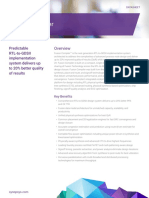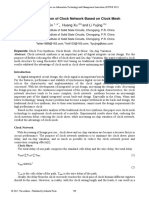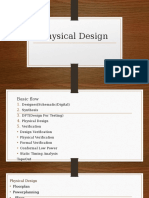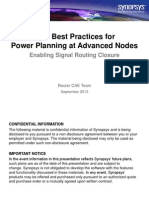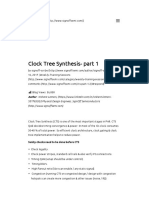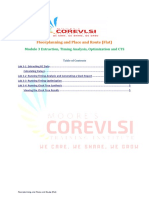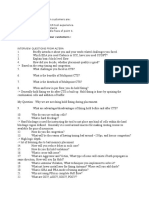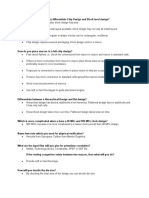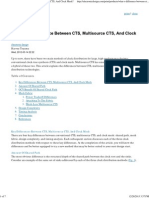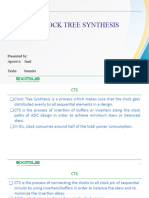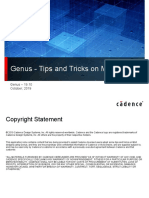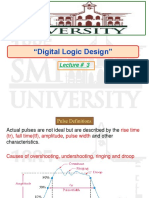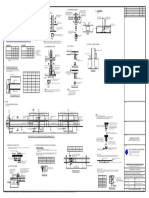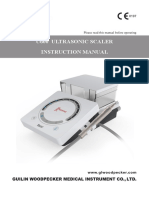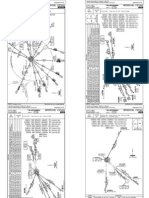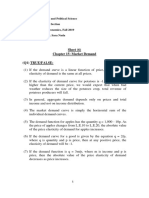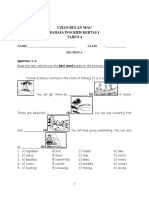0% found this document useful (0 votes)
764 views10 pagesSoC Design: Tracks, Cells, and Metrics
Tracks are wiring paths on a system-on-chip (SoC) that allow connections between different components. 7.5 track and 9 track technologies refer to the number of parallel wiring tracks available, with more tracks allowing more connections to be made simultaneously. Hold times in a chip design are independent of operating frequency because they depend on signal delays within the chip, not the clock speed. Process variations in chip manufacturing are quantified using statistical metrics like sigma, Cp, and Cpk to ensure designs meet specifications.
Uploaded by
Pankaj MudgilCopyright
© © All Rights Reserved
We take content rights seriously. If you suspect this is your content, claim it here.
Available Formats
Download as PDF, TXT or read online on Scribd
0% found this document useful (0 votes)
764 views10 pagesSoC Design: Tracks, Cells, and Metrics
Tracks are wiring paths on a system-on-chip (SoC) that allow connections between different components. 7.5 track and 9 track technologies refer to the number of parallel wiring tracks available, with more tracks allowing more connections to be made simultaneously. Hold times in a chip design are independent of operating frequency because they depend on signal delays within the chip, not the clock speed. Process variations in chip manufacturing are quantified using statistical metrics like sigma, Cp, and Cpk to ensure designs meet specifications.
Uploaded by
Pankaj MudgilCopyright
© © All Rights Reserved
We take content rights seriously. If you suspect this is your content, claim it here.
Available Formats
Download as PDF, TXT or read online on Scribd
/ 10



